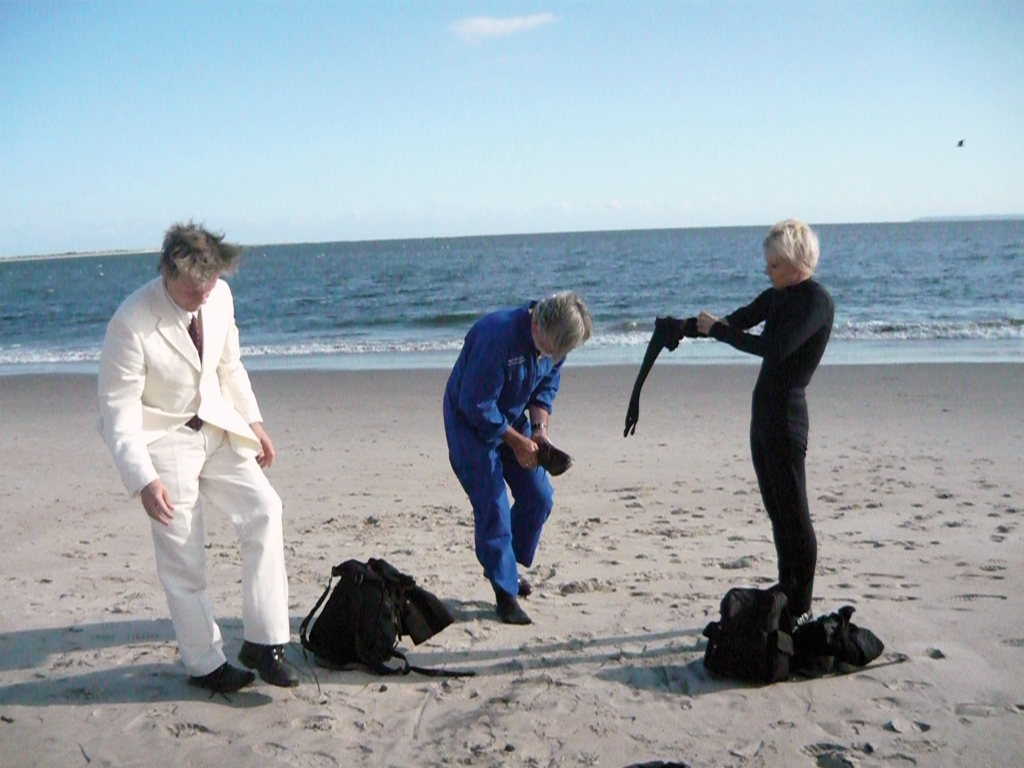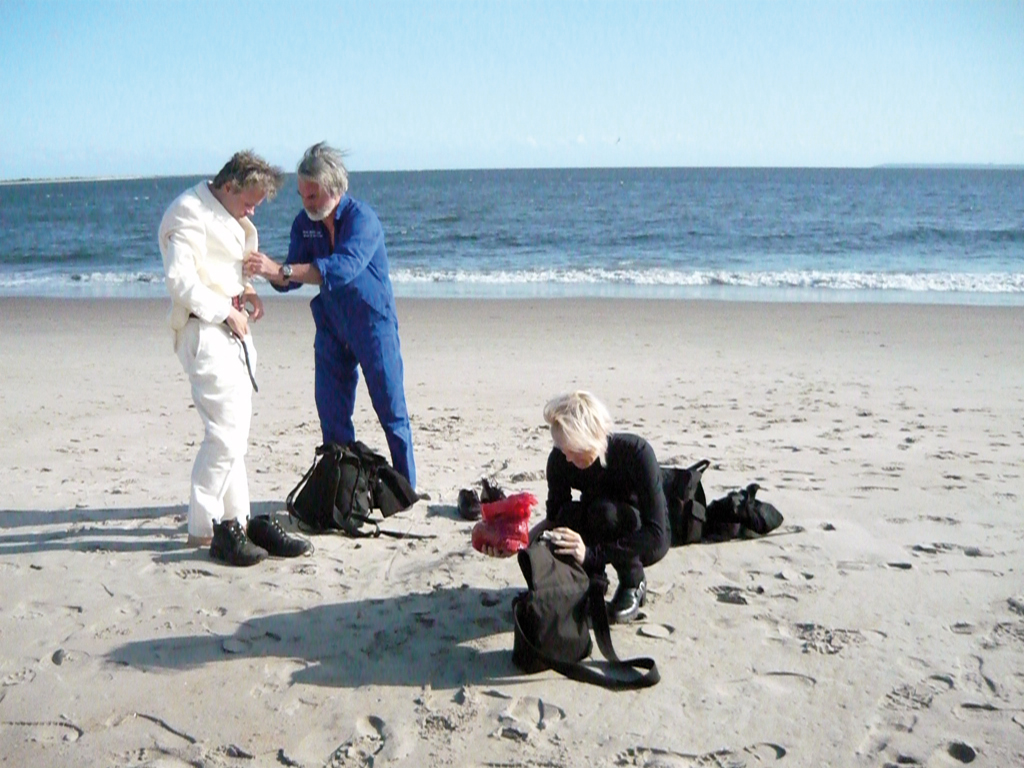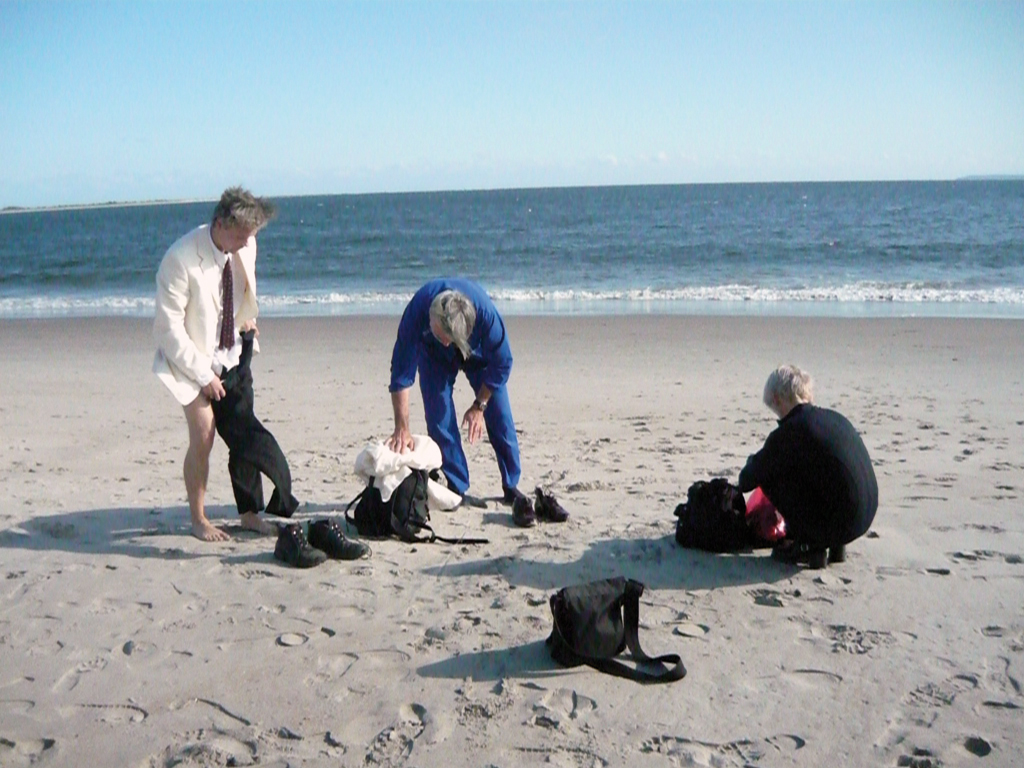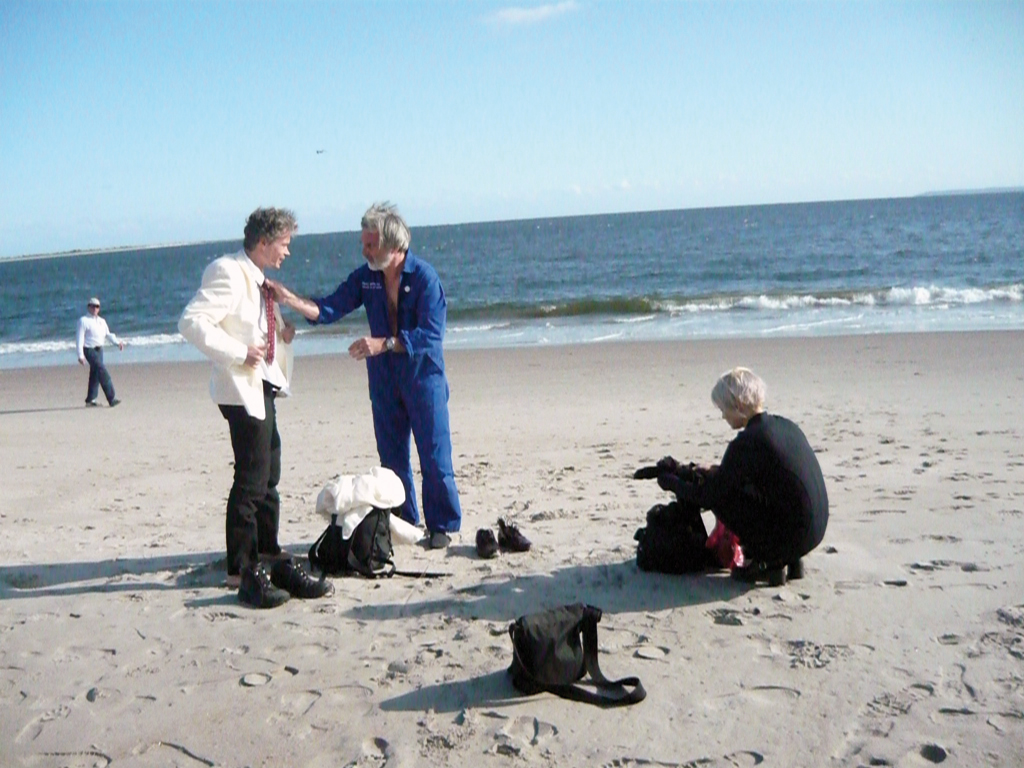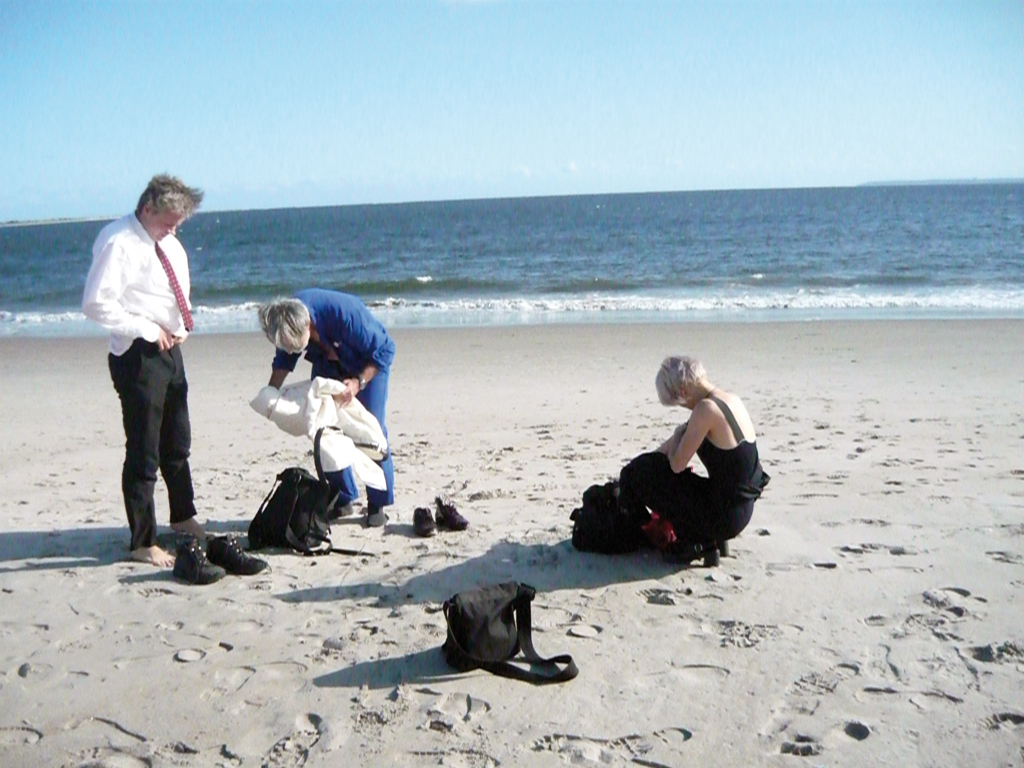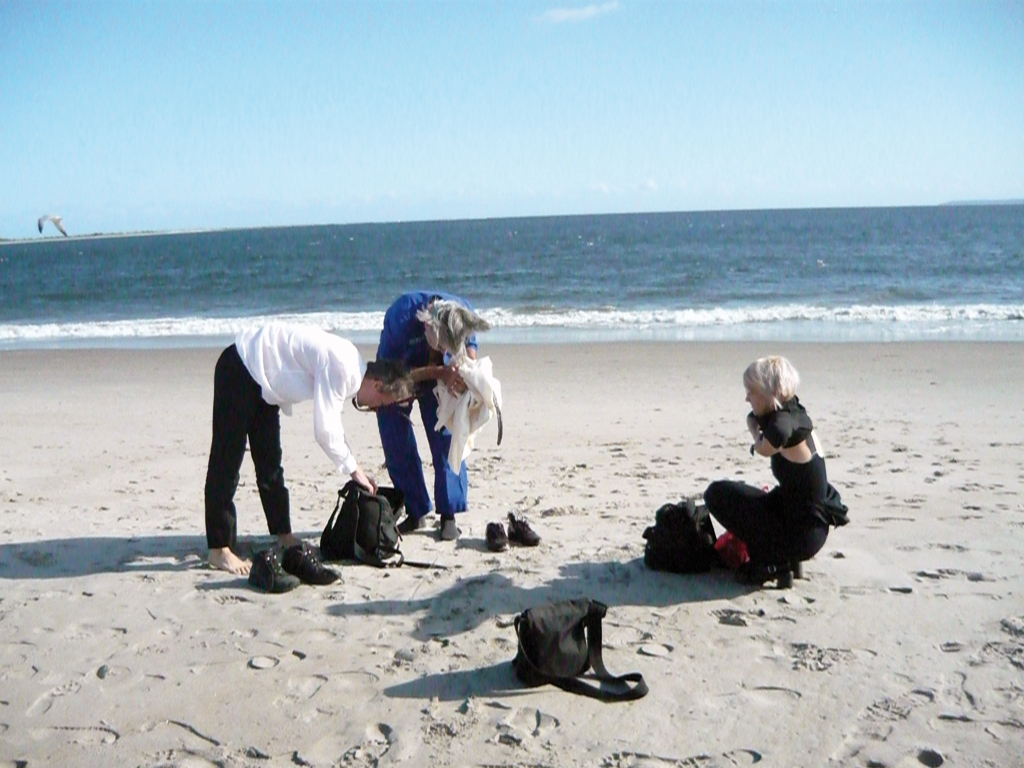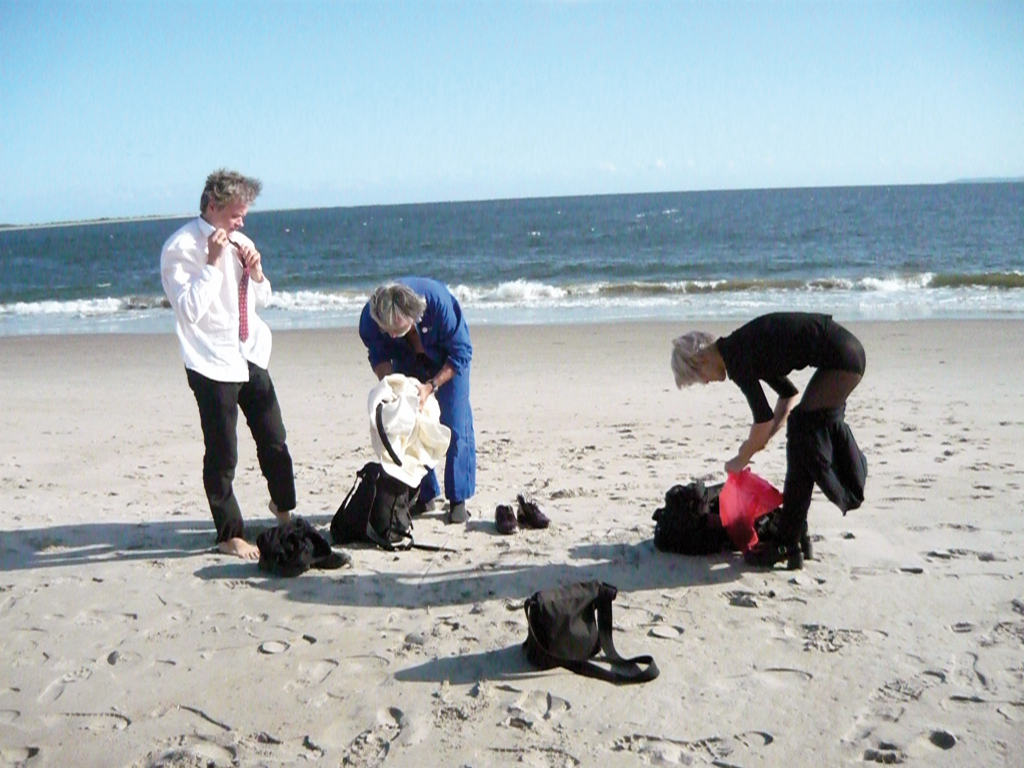M1+1
MACHFELD1+1 Die Partitur der Verdoppelung
[The Musical Score of Duplication]
M1+1 the companions: Miss Coochie, Jack Hauser, Sabina Holzer, Sabine Maier, Michael
Mastrototaro, Paul Sernine, Anton Tichawa, Miryam Van Doren, Irma Vep
M1+1 das begehbare Journal [the accessible journal]
We, M1+1, start our imaginary voyage in the art sphere. The journey takes us through unexplored places. Paths come into view. We enter a clearing, change our point of view and let our minds wander.
Our gaze meets our own reflection, or rather, a likeness. Like a phantasmagoria of the stage. We find ourselves, it seems. Or is that our companion?
As we take our next step, our counterpart takes another one.
Our backgrounds are diverse. A heterogeneous conglomeration from film, photography and the media, visual and performing arts.
Our interests are varied.
We meet in practice, in joint actions, in doing. Our concepts relate to the ways we work with material. Action arises from specific motivation, is accompanied by it – evolves together with it.
In this open space of art, material, objects and actions emerge. Interacting art.
We meld the “intimacy” of physical perception with virtuality when accompanied by our living musicbox Anton der Holzfäller [Anton the lumberjack, from a David Lynch film].


